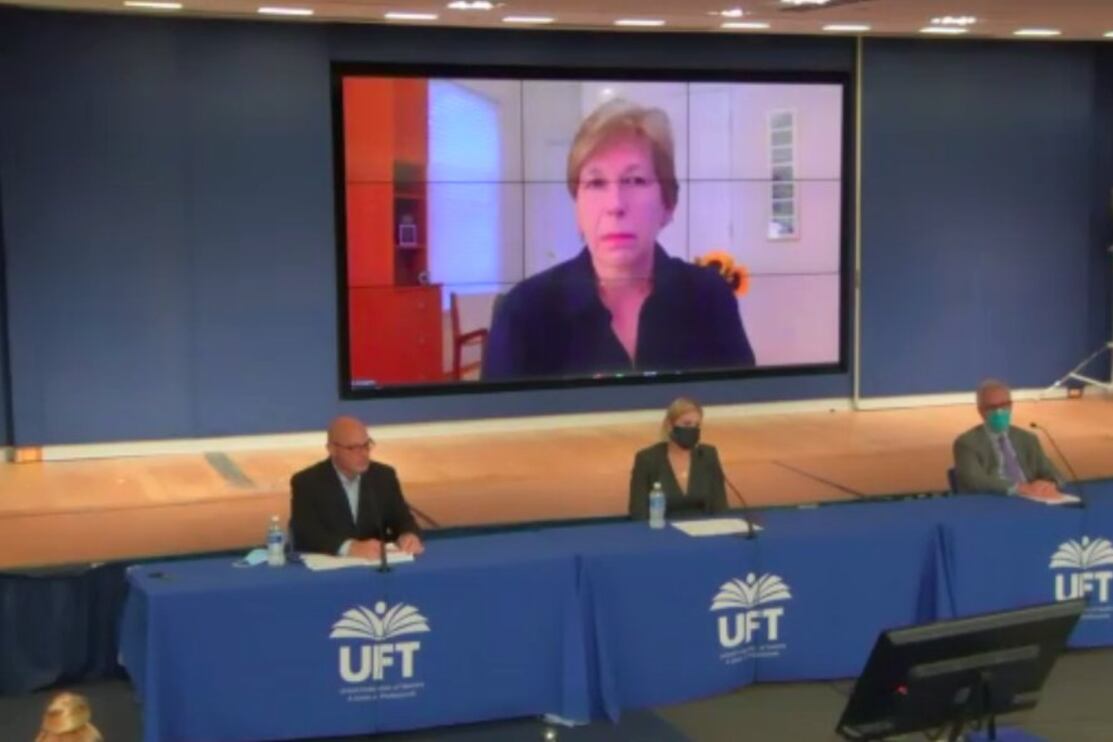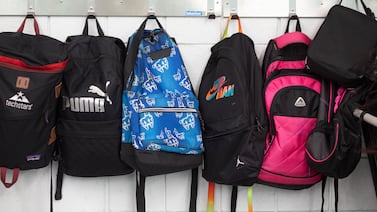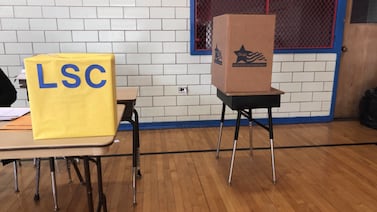Every student and teacher must receive a COVID-19 test before returning to in-person learning, the New York City teachers union said Wednesday.
The union’s calls for a massive program to test for antibodies as well as the coronavirus ups the pressure to delay reopening school buildings and lays the groundwork for a possible strike if educators’ demands are not met.
The scale of tests needed to meet the union’s demands would make a Sept. 10 start date all but impossible. As of now, an estimated 700,000 students are planning to return to school buildings one to three days a week, while some 66,000 teachers are expected to return to their classrooms.
“It is our judgment at this point that, if you open schools Sept. 10, it will be one of the biggest debacles in history,” said United Federation of Teachers President Michael Mulgrew. “If we feel that a school is not safe, we are prepared to go to court and take action.”
Education department officials dismissed Mulgrew’s dire warnings as “fear mongering,” setting up a standoff between the union and Mayor Bill de Blasio, and throwing more uncertainty onto what is already an unpredictable school year for families.
“We’ve been working in good faith with the unions for months. We’re going to keep working with them. We care more about kids and parents than these games,” de Blasio told reporters during a school visit on Wednesday. “We are going to keep moving forward to get schools ready for our kids. That’s what the children and parents of New York City are asking us to do. That’s our job. That’s our educators’ job.”
Many families struggled with remote learning and are eager to send children back to school buildings so they can return to work — though the current plans do little to help those who need child care. Many others, including teachers, are frightened of returning to the classroom: they’re worried about poor ventilation, enforcing mask-wearing, and mask-less students eating lunch in the classroom. Distrust also lingers over how the city handled school closures in March.
The union released a three-page check list of safety measures that officials want each school to have in place before opening, and is sending its own teams to buildings to ensure that each precaution is being taken. For instance, the union is demanding that every school must have properly working exhaust fans, which help pull out stale and potentially virus-laden air from classrooms. Also on the checklist: confirming that each school has its promised protective equipment such as N-95 masks for nurses, other masks for teachers and students, and bathroom soap.
Without more robust testing and assurances that health precautions have been taken, Mulgrew said schools should not open. He said the union is prepared to head to court, or to strike or encourage sick-outs — despite the state’s Taylor Law forcing steep penalties on public sector union workers that take such job actions. The union could lose its ability to automatically collect dues and teachers could miss out on paychecks under the law.
“If a court determines we are breaking the Taylor Law, so be it,” Mulgrew said. “We will deal with the ramifications.”
Teachers aren’t the only ones raising the alarm. The Council of School Supervisors and Administrators, which represents principals, recently called to delay returning to school buildings. Principals across entire districts in Manhattan and Brooklyn have also petitioned the city to push back the start date.
New York City remains the only large school district in the country that is forging ahead with plans for in-person learning this fall, albeit with a hybrid schedule that includes a mix of on-campus instruction and remote learning for students. Families can also opt their children into fully remote schooling, and 30% of students have chosen this so far.
The city’s positive test infection rates plummeted Wednesday to .24%, the lowest at any point in the pandemic. Mayor de Blasio has said schools will only open if the COVID infection rate remains below 3%.
Because of the low infection rates, public health officials have said that New York City is well positioned to begin reopening school buildings — as long as proper health measures are taken, like social distancing and mask-wearing. The city has dedicated a coronavirus tracing team just for schools and has laid out protocols for shutting down campuses when positive cases arise. Teachers have been urged to get tested for the virus before returning to class, and the city has promised to expedite those tests.
Yet the union is calling for a more robust testing system. Mulgrew said that students, in addition to teachers, should get tested before schools reopen — and that testing should continue in regular intervals once school is in session, to help catch cases before they morph into clusters.
It’s unclear whether New York City has the capacity to perform so many tests, and is currently conducting about 50,000 a day.
Los Angeles schools, which are planning to start the year remotely, recently announced a coronavirus testing and contact-tracing program for all of its 500,000 students and their families as well as their school system’s 75,000 staffers. The ambitious program, in partnership with UCLA, Stanford and Johns Hopkins University, Microsoft, Anthem Blue Cross and HealthNet, among others, is expected to cost about $300 per student over the year, nearly $150 million, according to the Los Angeles Times.
Public health officials who joined the New York City teachers union for Wednesday’s announcement stressed the need for a rigorous testing regime to ensure safety, especially in school settings where social distancing and enforcing mask-wearing can be difficult.
“Have you been in a classroom with a bunch of kids?” asked Jacqueline Moline, a doctor and vice president of epidemiology and prevention at Northwell Health.
“You want to make sure that people don’t have the disease first,” she said, “and then you use the PPE [like masks] as a secondary measure rather than relying on it as the sole measure.”








